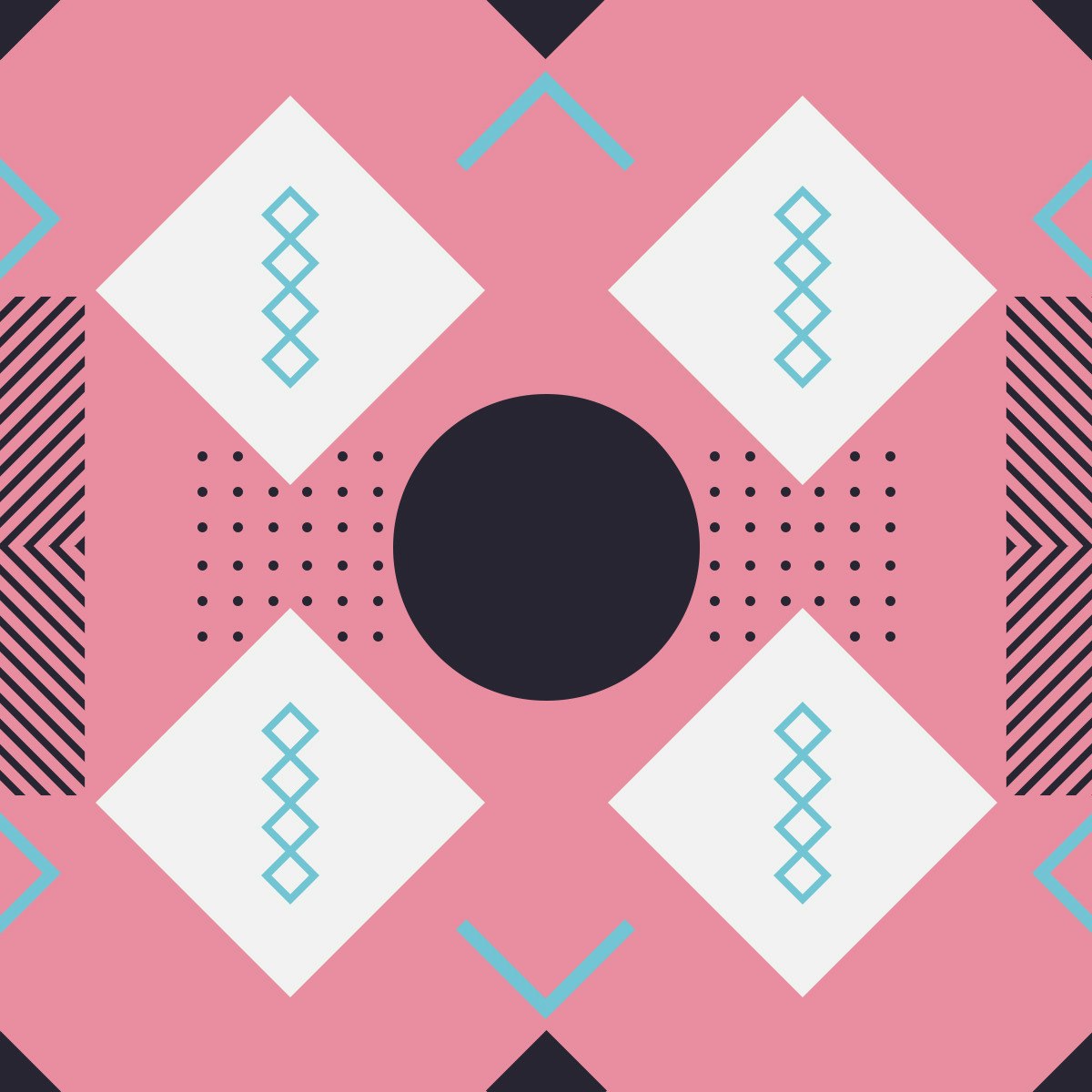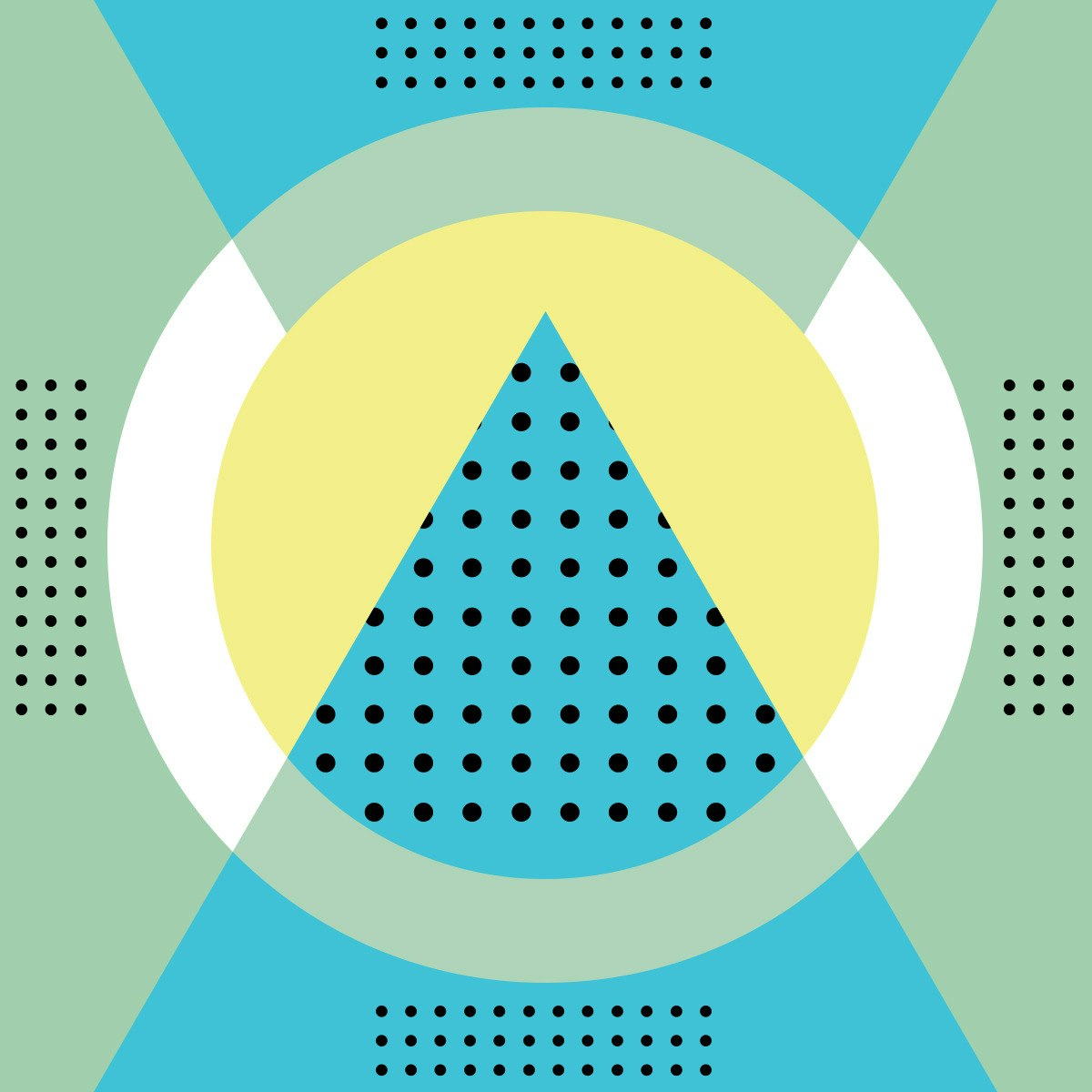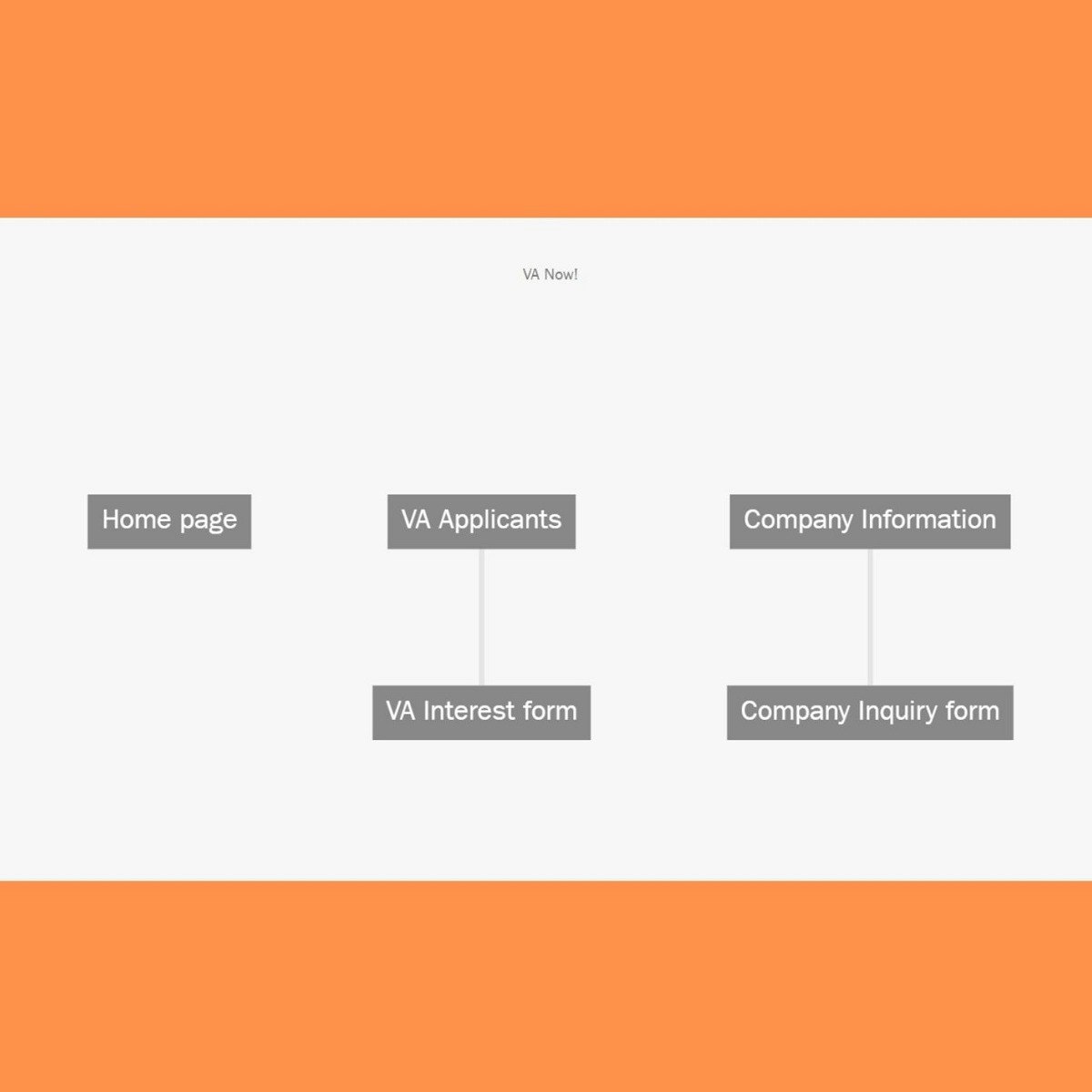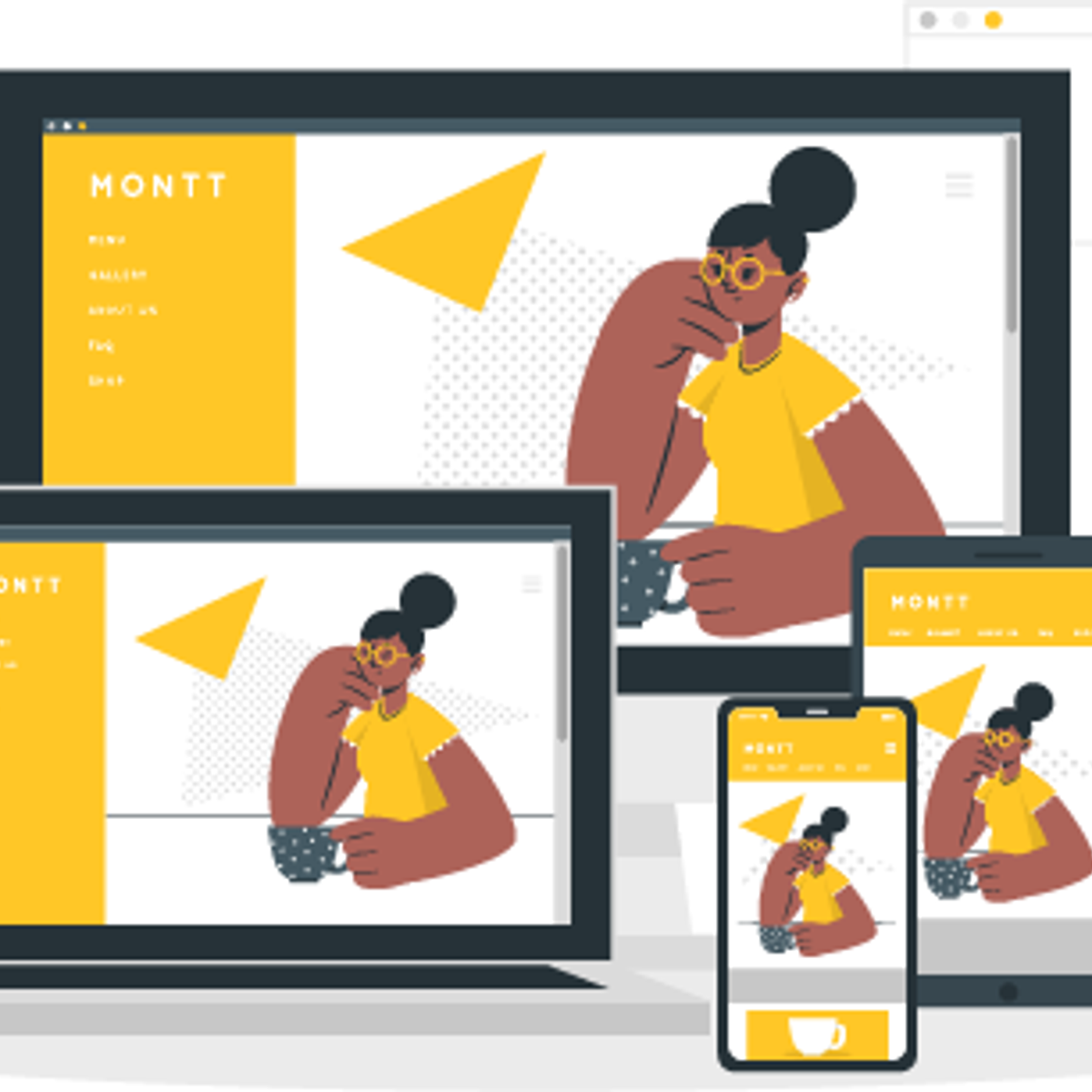UI/UX Designer
UI/UX Designer: Crafting Digital Experiences
User Interface (UI) and User Experience (UX) Design is a field focused on creating digital products like websites and apps that are not only functional but also enjoyable and easy to use. Think of UX as the overall feeling you get when using a product – is it logical? Does it meet your needs? UI is the specific look and feel – the buttons, the colors, the typography. While distinct, UI and UX work hand-in-hand to shape how we interact with technology.
A career in UI/UX design can be incredibly rewarding. Designers play a crucial role in bridging the gap between technology and people, ensuring that products are user-centered. It involves a blend of creativity, psychology, and technical understanding. You might find excitement in solving complex user problems, satisfaction in seeing people effortlessly use something you designed, or enjoyment in the collaborative process of building digital experiences.
Introduction to UI/UX Designer
What is UI/UX Design?
User Experience (UX) design focuses on the entire journey a user takes with a product. It's about understanding user needs, motivations, and pain points. UX designers ensure the product's structure, flow, and interactions are logical, intuitive, and fulfill the user's goals effectively. It answers the question: "Is this product usable and valuable?"
User Interface (UI) design, on the other hand, is concerned with the visual presentation and interactivity of the product. UI designers craft the look and feel, including screen layouts, visual elements like buttons and icons, typography, color palettes, and animations. It ensures the product is aesthetically pleasing and guides the user visually. UI answers the question: "Does this product look good and feel intuitive to interact with?"
While specialized roles exist (UX Designer, UI Designer, UX Researcher), the term "UI/UX Designer" often refers to professionals who handle aspects of both. They understand that a beautiful interface is ineffective if the underlying experience is confusing, and a logical experience can be hampered by a poor interface. The goal is a seamless blend of usability and aesthetics.
Impact on Products and Users
Effective UI/UX design is critical for product success. A positive user experience leads to higher user satisfaction, engagement, and loyalty. When users find a product easy and enjoyable to use, they are more likely to return, recommend it, and achieve their goals efficiently.
Conversely, poor UI/UX can lead to frustration, abandonment, and negative reviews. If users struggle to navigate an app or find information on a website, they will likely seek alternatives. This directly impacts business metrics like conversion rates, customer retention, and brand reputation.
Ultimately, UI/UX design humanizes technology. It advocates for the user, ensuring that digital products are built not just based on technical capabilities or business requirements alone, but with a deep understanding of the people who will use them.
Where Do UI/UX Designers Work?
UI/UX designers are in demand across a vast range of industries. The technology sector, including software companies, SaaS providers, and mobile app developers, is a major employer. E-commerce platforms rely heavily on UI/UX to optimize shopping experiences and drive sales.
Financial institutions (banks, FinTech startups) require designers to create secure and user-friendly online banking and investment platforms. Healthcare organizations need designers for patient portals, telehealth applications, and medical device interfaces. Educational institutions and EdTech companies hire designers for learning management systems and online course platforms.
Entertainment, media, travel, government agencies, and non-profits also employ UI/UX designers. Essentially, any organization that offers a digital product or service benefits from skilled designers who can improve user interaction and satisfaction.
Key Outputs of UI/UX Work
The work of a UI/UX designer results in various tangible outputs, known as deliverables, used throughout the design and development process. These artifacts help communicate ideas, test concepts, and guide implementation.
Common deliverables include user personas (fictional representations of target users), user journey maps (visualizing the user's interaction path), and user flows (diagrams showing steps to complete a task). Sitemaps define the structure and navigation of a website or app.
Wireframes are basic skeletal layouts focusing on structure and functionality, while mockups add visual details like color and typography. Prototypes are interactive simulations of the final product, used for testing and feedback before development begins. Designers also produce style guides, usability reports, and design system documentation.
These books offer foundational knowledge for anyone interested in the principles behind great design.
Key Responsibilities of a UI/UX Designer
Understanding the User: Research Methods
A core responsibility of UI/UX design is deeply understanding the target users. This involves conducting user research to gather insights into their needs, behaviors, motivations, and challenges. Common methods include user interviews, surveys, and contextual inquiries (observing users in their natural environment).
Designers analyze research data to identify patterns and create user personas and empathy maps. These tools help the team stay focused on the user throughout the design process. Usability testing, where real users interact with a prototype or product, is crucial for identifying pain points and areas for improvement.
Empathy is paramount. Designers must step into the users' shoes to understand their perspective and design solutions that genuinely address their needs, rather than relying on assumptions.
Structuring the Experience: Information Architecture and Interaction Design
Once user needs are understood, designers structure the product's content and flow. Information Architecture (IA) involves organizing, structuring, and labeling content effectively and sustainably. The goal is to help users find information and complete tasks easily. Deliverables like sitemaps help visualize this structure.
Interaction Design (IxD) focuses on defining how users interact with the interface. This includes designing navigation systems, workflows, and the behavior of interactive elements (like buttons, forms, and menus). User flows are often created to map out the steps a user takes to accomplish specific goals.
Both IA and IxD aim to create a logical, intuitive, and efficient user experience. They ensure users can navigate the product seamlessly and understand how to interact with it without confusion.
This comprehensive text delves deeper into the principles of Interaction Design.
Crafting the Interface: Visual Design and Accessibility
Visual design translates the structure and interaction concepts into a tangible interface. This involves applying principles of visual hierarchy, layout, color theory, typography, and imagery to create an aesthetically pleasing and clear UI. Consistency in visual elements helps build brand identity and predictability for the user.
A critical aspect of UI design is accessibility. Designers must ensure that the product is usable by people with diverse abilities, including those with visual, auditory, motor, or cognitive impairments. This involves adhering to standards like the Web Content Accessibility Guidelines (WCAG), considering factors like color contrast, font size, keyboard navigation, and screen reader compatibility.
Creating style guides or contributing to design systems helps maintain visual and interactive consistency across different parts of a product or even multiple products within an organization.
Working Together: Collaboration
UI/UX designers rarely work in isolation. Collaboration is a key part of the role. They work closely with product managers to understand business goals and user requirements, ensuring the design aligns with the overall product strategy.
Constant communication with developers is essential to ensure designs are technically feasible and implemented correctly. Designers often hand off detailed specifications and assets, and provide feedback during the development process.
Designers also collaborate with other designers, UX researchers, UX writers, and stakeholders (like marketing or sales teams). Presenting designs, gathering feedback, and iterating based on input are routine activities. Strong communication and interpersonal skills are vital for navigating these collaborations successfully.
Essential Skills for UI/UX Designers
Technical Proficiency: Tools of the Trade
Proficiency with industry-standard design and prototyping tools is essential. Software like Figma, Sketch, and Adobe XD are commonly used for creating wireframes, mockups, and interactive prototypes. Familiarity with features like components, libraries, and collaboration tools within these platforms is crucial for efficient workflow.
While not always mandatory for pure design roles, a basic understanding of front-end technologies like HTML, CSS, and even JavaScript can be highly beneficial. This knowledge helps designers create feasible designs and communicate more effectively with developers. Some roles, particularly UI-focused or design system roles, may require stronger front-end skills.
Other useful tools might include software for user research (e.g., survey tools, usability testing platforms), diagramming (for user flows and sitemaps), and project management.
These courses provide hands-on training with popular design tools like Figma and Sketch, allowing you to build practical skills quickly.
Human-Centered Skills: Empathy and Communication
Beyond technical tools, soft skills are critical for success in UI/UX design. Empathy—the ability to understand and share the feelings of users—is perhaps the most important. It drives user-centered design decisions and ensures products truly meet user needs.
Strong communication skills are vital for articulating design rationale, presenting ideas to stakeholders, collaborating with team members, and receiving constructive feedback. This includes both written and verbal communication, as well as visual storytelling through design artifacts.
Active listening helps designers effectively gather insights during user research and understand feedback from colleagues. Problem-solving skills are needed to tackle complex user challenges and find creative, effective solutions within given constraints.
Analytical Thinking: Testing and Iteration
UI/UX design is an iterative process informed by data and feedback. Analytical skills are necessary to interpret user research findings and usability test results. Designers need to identify patterns, understand the "why" behind user behavior, and translate insights into actionable design improvements.
Familiarity with different usability testing methods (moderated, unmoderated, A/B testing) and knowing how to plan, conduct, and analyze tests is important. This involves defining metrics, observing users, synthesizing feedback, and prioritizing changes based on impact.
The ability to iterate—to refine designs based on testing and feedback—is fundamental. This requires being open to criticism, embracing change, and continuously striving to improve the user experience.
Understanding the principles of usability is key to evaluating and improving designs. This classic text provides a deep dive into the field.
Showcasing Your Work: Portfolio Development
A strong portfolio is arguably the most important asset for any UI/UX designer, especially when seeking employment. It's the primary way to showcase your skills, design process, and the impact of your work to potential employers or clients.
A good portfolio goes beyond just showing final polished screens. It should include case studies that detail the problem you were solving, your design process (research, ideation, prototyping, testing), your specific contributions, and the outcomes or results. Explaining your design decisions is crucial.
Tailor your portfolio to the types of roles you're applying for. Ensure it's well-organized, visually appealing, and easy to navigate (practicing good UX on your own portfolio!). Include a variety of projects if possible, demonstrating different skills and contexts. For those starting out, personal projects, volunteer work, or conceptual redesigns can be included.
These resources can assist you in crafting a compelling portfolio to showcase your abilities.
Formal Education Pathways
University Degrees
Several undergraduate degree paths can lead to a career in UI/UX design. Degrees in Human-Computer Interaction (HCI) are perhaps the most directly relevant, often combining computer science, design, and psychology. Graphic Design programs provide a strong foundation in visual principles, aesthetics, and design tools.
Psychology degrees can be valuable, offering insights into human behavior, cognition, and research methods crucial for UX. Computer Science degrees provide technical understanding helpful for collaborating with developers, while Information Science programs often cover aspects of information architecture and organization.
No single degree guarantees a UI/UX career. Regardless of the major, aspiring designers should supplement their studies with relevant coursework, projects, and internships focused on user-centered design principles and practices.
Understanding the interplay between humans and computers is central to the field. This book provides a comprehensive overview.
Graduate Studies and Research
For those seeking deeper specialization or careers in research, graduate programs (Master's or PhD) in HCI, Interaction Design, Information Science, or related fields can be beneficial. These programs often offer opportunities for advanced coursework, specialized research, and tackling complex design challenges.
A Master's degree can help differentiate candidates in a competitive job market or accelerate a move into specialized roles like UX Researcher or Design Strategist. PhD programs typically prepare individuals for academic positions or high-level research roles in industry labs.
Graduate studies often involve significant research projects or theses, allowing students to contribute new knowledge to the field and develop deep expertise in specific areas of UI/UX.
Certificates and Workshops
Beyond traditional degrees, numerous shorter-term educational options exist. Bootcamps offer intensive, immersive training focused on practical skills and portfolio building, often geared towards career changers. University extension programs and online platforms provide certificate programs covering UI/UX fundamentals and tools.
Workshops and individual courses (online or in-person) allow professionals to upskill in specific areas, such as mastering a new design tool, learning advanced research techniques, or exploring emerging trends like voice UI design.
These options offer flexibility and can be a faster route into the field or a way to supplement existing skills. However, the quality and rigor vary, so thorough research is important when choosing a program. Regardless of the format, practical application and portfolio development remain key.
Bridging Theory and Practice
Regardless of the educational pathway chosen—be it a university degree, bootcamp, or self-study—success in UI/UX design hinges on effectively bridging theory and practice. Understanding design principles, psychological concepts, and research methodologies is essential, but this knowledge must be applied through hands-on work.
Academic programs should incorporate project-based learning, allowing students to apply theoretical concepts to real or simulated design problems. Internships provide invaluable real-world experience, exposure to team dynamics, and portfolio pieces.
Self-directed learners, in particular, must actively seek opportunities to practice their skills through personal projects, contributing to open-source initiatives, or taking on small freelance gigs. Building a portfolio that demonstrates practical application of skills is non-negotiable.
Online Learning and Self-Directed Study
Building Your Own Curriculum with Online Courses
Online learning offers incredible flexibility and accessibility for aspiring UI/UX designers, especially career pivots or those balancing learning with other commitments. Platforms like OpenCourser aggregate thousands of courses, allowing you to build a personalized curriculum tailored to your needs and goals.
Start with foundational courses covering core UX principles, user research methods, information architecture, interaction design, and visual design fundamentals. Then, dive into specific tool-based courses for software like Figma or Adobe XD. OpenCourser's features, such as saving courses to custom lists, can help organize your learning path.
Look for courses offered by reputable institutions or experienced practitioners. Consider specializations like mobile design, accessibility, or design systems as you progress. The key is to structure your learning logically, moving from fundamentals to more advanced topics and practical application.
Explore the Design category on OpenCourser to find a wide range of relevant courses.
These comprehensive courses cover foundational UI/UX concepts and practical skills, suitable for building a strong base through online learning.
Learning by Doing: Projects and Case Studies
Watching lectures and reading articles isn't enough; you need to actively apply what you learn. Project-based learning is critical for solidifying skills and building a portfolio. Start small, perhaps redesigning a feature of an existing app or website (clearly identifying it as a conceptual project).
Challenge yourself with personal projects based on your interests or problems you observe in the world. Document your process thoroughly for each project: define the problem, outline your research, show your sketches and wireframes, explain your design decisions, present your mockups or prototypes, and discuss testing and iteration (even if simulated).
Many online courses include capstone projects. Participating in design challenges or contributing to open-source projects can also provide valuable experience and portfolio pieces. The goal is to demonstrate your ability to go through the entire design process and create thoughtful solutions.
Project-based courses offer excellent opportunities to gain hands-on experience with specific UI/UX tasks and deliverables.
Finding the Right Balance: Theory vs. Tools
It's easy to get caught up in learning the latest design software, but mastering tools is only part of the equation. A deep understanding of fundamental design principles, user psychology, research methods, and interaction design concepts is what truly distinguishes a great designer.
Tools evolve rapidly, but the core principles of user-centered design remain constant. Focus on understanding *why* certain design choices work, not just *how* to implement them in a specific tool. Study concepts like usability heuristics, cognitive biases, information foraging theory, and visual perception.
Allocate your learning time wisely. Practice with tools to become proficient, but dedicate significant effort to reading books, articles, and case studies that delve into the theoretical underpinnings of UI/UX. This balance ensures you develop both the craft and the critical thinking needed for long-term success.
Understanding how people perceive and interact with the world is fundamental. This book and course explore relevant psychological concepts.
Connecting with Peers: Online Communities and Networking
Learning UI/UX design, especially independently, can feel isolating. Engaging with the design community is crucial for support, feedback, inspiration, and networking. Join online forums (like Reddit communities), Slack or Discord groups dedicated to UI/UX, and follow influential designers and organizations on social media platforms like LinkedIn and Twitter.
Share your work-in-progress (appropriately) and ask for constructive feedback. Participate in discussions, ask questions, and offer help to others when you can. Attending virtual (or local) meetups, webinars, and conferences is another great way to learn and connect.
Networking isn't just about finding jobs; it's about building relationships with peers who can offer different perspectives, share resources, and provide encouragement. A strong network can be invaluable throughout your career journey.
Career Progression for UI/UX Designers
Starting Out: Entry-Level Roles
Most designers begin their careers in entry-level positions such as Junior UI/UX Designer, UX/UI Designer I, or even internships. Responsibilities at this stage often involve supporting senior designers on projects, focusing on specific tasks like creating wireframes, visual assets, or low-fidelity prototypes based on established guidelines.
Entry-level roles are crucial for gaining practical experience, learning team workflows, and understanding how design decisions are made within a business context. Expect to spend time refining your skills, learning specific tools and processes used by the company, and contributing to smaller parts of larger projects under supervision.
Building a strong portfolio demonstrating foundational skills and a good understanding of the design process is key to landing that first role. Be prepared to learn quickly and absorb feedback.
Growing Expertise: Mid-Career Specializations
After gaining a few years of experience, designers often start specializing based on their interests and strengths. Common mid-career paths include focusing more heavily on UX Research, Interaction Design, Visual Design, or Information Architecture. Some may specialize in designing for specific platforms (e.g., mobile, web, enterprise software).
Other specializations include UX Writing (crafting interface copy), Usability Analysis (focusing on testing and evaluation), or Design Systems (creating and maintaining reusable component libraries and guidelines). Some designers might blend UI/UX with front-end development skills, becoming UI Developers.
Mid-career roles typically involve more autonomy, responsibility for larger features or projects, and potentially mentoring junior designers. Continuous learning and skill development are essential to advance and specialize effectively.
Leading the Way: Senior and Leadership Roles
With significant experience (typically 5+ years), designers can progress into senior and leadership positions. Senior UI/UX Designers tackle complex projects, often lead design initiatives, mentor junior team members, and contribute to design strategy. They possess deep expertise in their domain.
Leadership pathways include roles like Design Lead, Design Manager, Director of UX, or Head of Design. These positions involve overseeing design teams, setting design vision and strategy, managing resources, collaborating with executive leadership, and fostering a strong design culture within the organization.
Moving into leadership often requires developing strong management, strategic thinking, and communication skills, shifting focus from hands-on design execution to enabling and guiding the design team and influencing product direction at a higher level.
Compensation Insights: Salary Expectations
Salaries for UI/UX designers vary significantly based on factors like years of experience, specific role and responsibilities, industry, company size and stage, and geographic location. Entry-level positions typically offer competitive starting salaries, reflecting the demand for these skills.
As designers gain experience and move into mid-level and senior roles, compensation generally increases substantially. Specialized skills or leadership responsibilities often command higher salaries. Freelance rates also vary widely based on experience and project scope.
Resources like the U.S. Bureau of Labor Statistics (BLS) data for Web and Digital Interface Designers and O*NET OnLine provide general salary benchmarks, although specific UI/UX roles might have nuances not fully captured in broader categories. Salary comparison websites can also offer insights, but always consider the factors mentioned above.
Industry Applications and Demand
Where the Jobs Are: High-Demand Sectors
Demand for UI/UX designers remains strong across various sectors. The technology industry (software, hardware, SaaS) is a primary driver, constantly seeking to improve user interfaces and experiences for their products. E-commerce and retail heavily invest in UX to optimize online shopping journeys and increase conversions.
FinTech and traditional financial services require designers to simplify complex processes and build trust through user-friendly interfaces. Healthcare needs designers for patient portals, electronic health records, and medical devices, focusing on usability and accessibility. The rise of EdTech has also created numerous opportunities in designing learning platforms.
Other sectors with significant demand include entertainment and media (streaming services, gaming), automotive (in-car interfaces, companion apps), travel and hospitality, and government services seeking to improve digital interactions with citizens. The breadth of application ensures continued relevance for UI/UX skills.
Work Styles: Freelance vs. In-House
UI/UX designers have options regarding their work arrangements. Many work "in-house" as full-time employees for a single company. This often provides stability, benefits, deeper involvement in specific products, and closer collaboration with a consistent team.
Alternatively, designers can work as freelancers or contractors, taking on projects for various clients. Freelancing offers flexibility in choosing projects, setting hours, and potentially higher earning potential per project, but requires managing business aspects like finding clients, invoicing, and handling taxes. It often provides exposure to a wider range of industries and problems.
Some designers work for design agencies, which serve multiple clients. This offers variety similar to freelancing but within a more structured company environment. The best fit depends on individual preferences for stability, variety, autonomy, and work-life balance.
The Influence of AI and Machine Learning
Artificial Intelligence (AI) and Machine Learning (ML) are increasingly influencing the UI/UX field. AI-powered tools can assist designers by automating repetitive tasks, generating design variations, analyzing user data for insights, and even creating basic prototypes or code snippets.
However, AI is generally seen as a tool to augment, not replace, human designers. Skills like empathy, strategic thinking, ethical judgment, understanding complex human contexts, and facilitating collaboration remain crucial human strengths. The focus may shift towards designers leveraging AI tools effectively and designing interfaces *for* AI-driven products.
Designers need to understand the capabilities and limitations of AI to incorporate it thoughtfully into user experiences and workflows. Ethical considerations around AI, such as bias in algorithms and data privacy, are becoming increasingly important aspects of the designer's role.
A recent report from Gartner suggests AI will significantly impact application development, highlighting the evolving landscape UI/UX designers operate within.
Geographic Opportunities
Traditionally, major technology hubs like Silicon Valley, Seattle, New York, London, and Berlin have offered the highest concentration of UI/UX job opportunities. These cities host numerous tech companies, startups, and agencies, creating vibrant ecosystems for designers.
However, the rise of remote work, accelerated by the global pandemic, has significantly broadened geographic possibilities. Many companies now hire UI/UX designers remotely, allowing professionals to work from various locations. This trend has opened up opportunities in smaller cities and different countries.
While major hubs still offer benefits like strong local networks and high salary potential, remote work provides flexibility and access to a wider range of companies. The best location depends on personal preferences, career goals, and whether a role requires in-person collaboration.
Emerging Trends in UI/UX Design
Beyond Screens: New Interaction Paradigms
The field of UI/UX is expanding beyond traditional graphical user interfaces (GUIs) on screens. Voice User Interfaces (VUIs), powering virtual assistants like Alexa and Siri, require designers to think about conversational flow, intent recognition, and audio feedback.
Designing for environments without screens, such as interactions within smart homes or automotive contexts, presents unique challenges. Gesture control and interactions within augmented and virtual reality also demand new design approaches and considerations for spatial awareness and immersion.
As technology integrates more seamlessly into our environment, designers will increasingly focus on creating intuitive and effective interactions across diverse modalities and contexts, moving beyond purely visual interfaces.
Designing Ethically: Responsibility and Regulation
There is a growing emphasis on ethical considerations within UI/UX design. Designers are increasingly aware of their responsibility to create products that are fair, transparent, inclusive, and respectful of user well-being and privacy. This includes actively avoiding dark patterns—deceptive interface designs that trick users into unintended actions.
Designing for inclusivity means considering the needs of diverse user populations, including those with disabilities (accessibility), different cultural backgrounds, and varying levels of digital literacy. Regulations like GDPR (General Data Protection Regulation) also impact design choices related to data collection and user consent.
Ethical design requires designers to critically evaluate the potential impact of their work on individuals and society, balancing business goals with user rights and advocating for responsible practices within their teams and organizations.
This book touches upon the broader context of HCI and ethical considerations in design.
Immersive Experiences: AR/VR Design
Augmented Reality (AR), which overlays digital information onto the real world, and Virtual Reality (VR), which creates fully immersive digital environments, represent exciting frontiers for UI/UX design. Designing for these platforms requires new skills and considerations.
Designers must think about spatial interfaces, 3D interactions, user comfort (avoiding motion sickness), and how to guide user attention within immersive environments. Information architecture and navigation principles need adaptation for non-linear, spatial contexts.
While still evolving, AR and VR offer potential applications in gaming, education, training, remote collaboration, e-commerce, and more. Designers skilled in creating intuitive and engaging immersive experiences will be increasingly valuable.
These courses provide entry points into understanding development for immersive platforms.
Sustainable Futures: Green Digital Design
Sustainability is emerging as a consideration in digital product design. While often less visible than physical product waste, digital technologies consume significant energy and resources through data centers, network transmission, and end-user devices. There's a growing awareness of the environmental footprint of the digital world.
Sustainable digital design, or "Green UX," involves practices aimed at reducing this impact. This might include optimizing code and images for faster loading and less data transfer, designing energy-efficient interfaces, promoting longer device lifecycles through software support, and considering the environmental impact of backend infrastructure choices.
While still a nascent area, designers can play a role by advocating for efficiency, reducing unnecessary digital clutter, and making conscious choices that minimize the environmental cost of the digital experiences they create.
Challenges in UI/UX Design Careers
The Balancing Act: User Needs vs. Business Constraints
One of the most common challenges faced by UI/UX designers is navigating the inherent tension between advocating for the ideal user experience and accommodating business requirements, technical limitations, or budget constraints. Achieving the perfect solution for users isn't always feasible.
Successfully managing this requires strong negotiation, communication, and problem-solving skills. Designers must effectively articulate the value of user-centered decisions while also understanding and respecting business goals. Finding creative compromises that satisfy both user needs and business objectives is a key skill.
It can be frustrating when designs get altered due to constraints, but viewing this as part of the design challenge—finding the best possible solution within realistic parameters—is a more productive mindset.
Staying Current: The Ever-Evolving Tool Landscape
The digital landscape changes rapidly, with new design tools, front-end frameworks, interaction paradigms, and technologies emerging constantly. Keeping skills up-to-date requires a commitment to continuous learning, which can feel demanding.
While it's important to stay aware of major trends and proficient in core tools, chasing every new piece of software can be overwhelming. Focus on mastering the fundamentals of design thinking, research, and interaction principles, as these endure longer than specific tools.
Leverage resources like online courses, blogs, podcasts, and conferences to stay informed. Frame continuous learning not as a burden, but as an exciting aspect of working in a dynamic and evolving field. OpenCourser can be a valuable resource for finding courses on new tools and techniques as they emerge.
Team Dynamics: Navigating Collaboration
Working within cross-functional teams (product managers, developers, marketers, etc.) is essential but can sometimes lead to challenges. Different roles may have conflicting priorities, communication styles can vary, and disagreements about design direction can arise.
Building strong collaborative relationships based on mutual respect and clear communication is vital. Learning to effectively present design rationale, actively listen to feedback from other disciplines, and facilitate constructive discussions helps overcome potential friction.
Developing empathy not just for users but also for colleagues' perspectives and constraints is important. Successful collaboration often involves compromise and finding shared understanding to move projects forward effectively.
Managing Well-being: Burnout and Workload
Like many creative and tech roles, UI/UX design can sometimes involve tight deadlines, demanding projects, and high expectations, potentially leading to stress and burnout. Managing workload and maintaining a healthy work-life balance is an ongoing challenge.
Setting realistic expectations, learning to prioritize tasks effectively, and communicating proactively about workload are important strategies. Knowing when to push back respectfully on unreasonable demands and advocating for sufficient time for proper design processes can help.
Taking regular breaks, pursuing interests outside of work, and seeking support from peers or mentors can contribute to well-being. Recognizing the signs of burnout early and taking steps to address them is crucial for long-term career sustainability and enjoyment.
Frequently Asked Questions
Do I need to code to be a UI/UX designer?
Generally, no. Core UI/UX design roles focus on research, strategy, information architecture, interaction design, visual design, and prototyping. Deep coding skills are usually not a requirement for these positions. The primary deliverables are often design specifications, wireframes, mockups, and prototypes, not production code.
However, a basic understanding of HTML, CSS, and potentially JavaScript can be highly beneficial. It helps designers understand technical feasibility, communicate more effectively with developers, and appreciate the implications of their design choices. Some roles, like UI Developer or Design Technologist, specifically bridge design and front-end development and require strong coding skills.
For most UI/UX roles, focus on mastering design principles and tools first. Consider learning coding basics as a valuable supplement, but don't let a lack of coding expertise deter you from pursuing design.
If you are interested in the development side, these careers are closely related:
These courses offer introductions to HTML, CSS, and JavaScript if you wish to explore the fundamentals.
How competitive is the UI/UX job market?
The job market for UI/UX designers can be competitive, particularly at the entry-level where many aspiring designers are trying to break in. Companies often seek candidates with demonstrated experience, making it challenging for those without a strong portfolio or prior internships.
However, the overall demand for skilled UI/UX professionals remains strong and is projected to grow as more businesses recognize the importance of user experience for digital success. Opportunities exist across various industries and company sizes.
To stand out, focus on building a compelling portfolio that showcases your design process and problem-solving skills. Networking, specializing in a niche area, and demonstrating a strong understanding of both user needs and business goals can also improve your competitiveness.
Can I succeed as a self-taught UI/UX designer?
Yes, absolutely. While formal education can provide structure and foundational knowledge, many successful UI/UX designers are self-taught or have transitioned from other fields. The most critical factor for success is demonstrating strong skills and a robust portfolio, regardless of how you acquired them.
Self-taught designers need discipline and motivation to structure their own learning using online courses, books, tutorials, and community resources. Actively seeking out projects (personal, volunteer, or freelance) to apply learning and build portfolio pieces is essential.
Employers in this field often prioritize demonstrated ability and a strong design process over specific degrees. If you can prove through your portfolio and interviews that you possess the necessary skills and mindset, a self-taught path can definitely lead to a successful career.
The OpenCourser Learner's Guide offers tips on structuring self-learning and making the most of online resources.
What is the typical career longevity in UI/UX?
UI/UX design offers good potential for career longevity. As technology continues to evolve, the need for professionals who can design user-friendly and effective interfaces remains constant. The field itself is evolving, offering opportunities for continuous growth and adaptation.
Designers can progress from junior to senior roles, specialize in areas like research or strategy, or move into leadership positions. Skills developed in UI/UX, such as problem-solving, user empathy, and communication, are transferable and valuable in related fields like product management or service design.
Like any tech-related field, staying current with tools and trends is important for long-term relevance. However, the fundamental principles of understanding users and designing effective interactions provide a stable foundation for a lasting career.
Are remote work opportunities common?
Yes, remote work opportunities have become increasingly common in the UI/UX field, particularly since 2020. Many tech companies and agencies have adopted remote or hybrid work models, recognizing that much design work can be done effectively from anywhere with the right collaboration tools.
This trend has opened up job possibilities regardless of geographic location, allowing designers to work for companies based elsewhere. However, some companies still prefer in-person collaboration, especially for certain roles or team structures.
When searching for jobs, you'll find a significant number of remote positions advertised. The availability depends on individual company policies and the nature of the specific role, but remote work is certainly a viable and widespread option for UI/UX designers.
How is AI impacting UI/UX job security?
AI is poised to change aspects of UI/UX work, but it's unlikely to eliminate the need for designers in the foreseeable future. AI tools can automate certain tasks like generating design variations, analyzing data, or even writing basic code, potentially increasing efficiency.
However, AI currently lacks the human qualities essential for great design: empathy, deep contextual understanding, ethical judgment, creativity in solving complex, nuanced problems, and the ability to navigate complex stakeholder relationships. AI is a tool that designers can leverage, not a replacement for their core skills.
The role may evolve, requiring designers to become adept at using AI tools, designing interfaces for AI-powered products, and focusing more on higher-level strategy, research, and complex problem-solving where human insight is irreplaceable. Job security is more likely tied to adaptability and the ability to leverage new technologies than to AI causing obsolescence.
Embarking on a career as a UI/UX Designer means stepping into a dynamic field dedicated to making technology more human-centered. It requires a blend of analytical thinking, creative problem-solving, technical skill, and deep empathy for users. While challenges exist, the opportunity to shape digital experiences and create products that genuinely help people can be immensely rewarding. Whether you pursue formal education or forge your own path through online learning, building a strong portfolio and committing to continuous development are key. Resources like OpenCourser are here to support your journey as you explore this exciting and impactful career.
















